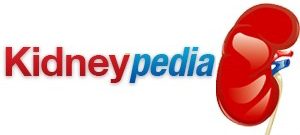Creatinine is a waste product generated by the metabolism, and by the muscles. It’s produced from creatine, which is a crucial molecule for the muscles to be able to use energy. The body converts approximately two percent of its creatine to creatinine every day as part of metabolism. Creatinine is filtered from the body by the kidneys and discarded in urine. For that reason, elevated creatinine in the blood are an indicator of impaired kidney function and potentially a sign of a serious problem. Usually the symptom is paired with reduced creatinine levels in urine.
Any condition that impairs the functioning of the kidneys is likely to cause elevated serum creatinine. It’s a pretty reliable indicator of the health of the kidneys. Kidney damage most commonly results from prolonged high blood pressure or from diabetes, so doctors may call for serum creatinine testing when either of those illnesses is present.
Ratio
Elevated creatinine in urine is not, unlike in the blood, an indicator of kidney dysfunction. It is however a balance indicator to weigh against serum creatinine levels. The most useful test, in fact, is to compare serum creatinine to urine creatinine.
If serum creatinine is elevated while urine creatinine is low, this is a pretty clear indicator of a problem with the kidneys. If both are elevated, this may indicate a different underlying cause, such as a high-
This means that men have higher normal creatinine levels than women, adults have higher normal levels than children, and so on. The inverse is true about urine creatinine levels. What this means is that all tests for serum creatinine should be evaluated based on the particular patient’s baseline.
Treatment
There is no treatment for elevated creatinine as such, this being a symptom or diagnostic indicator rather than a disorder. When kidney damage is indicated as an underlying cause, the treatment will depend on what is in turn causing the kidney failure.
Patients with high blood pressure who exhibit this symptom require more stringent monitoring and control of blood pressure than other patients. Normally, hypertensive patients with kidney damage will be placed on medication rather than relying solely on diet and exercise. Patients with diabetes treat the disorder with diet, exercise, and medication such as insulin replacement; where kidney damage is present the condition is monitored closely.
Hypertensive patients may actually show temporarily increased levels of creatinine early on as blood pressure is lowered. This is a function of
changes in vasodilation and not an indicator of structural kidney damage, and usually self-
Severe kidney damage and persistent strongly elevated creatinine (along with other signs) may call for dialysis treatment to remove wastes from the body that the kidneys are failing to process effectively, or even for a kidney transplant.
Dogs
Kidney disease and dysfunction can afflict dogs and cats as well as humans, and a similar test for elevated creatinine levels in the blood is used when the pet shows symptoms of kidney disorder.
Symptoms usually include, initially, increased thirst and urination, followed by loss of appetite and weight loss. When these symptoms occur the damage has progressed to a point where it may be irreversible. For that reason, it’s recommended that when a pet shows the early signs a trip to the vet be made for examination and testing.
